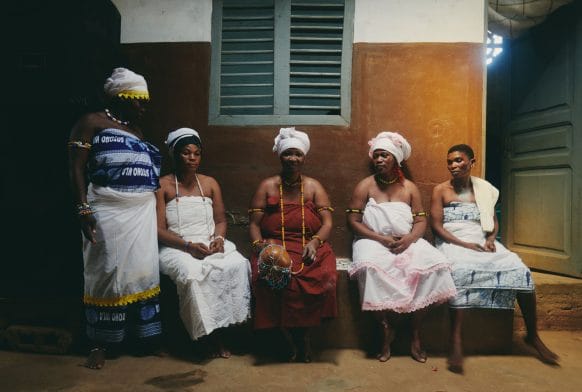
Fiddle. The body is of shoe-shape, slightly arched at front and back. Two lens-shaped sound-holes have extensions gouged into but not through the wood to give a rudimentary f-shape. The neck is the same depth as the body and is roughly shaped into a peg-box ending with a finial which may represent a vestigial scroll. Four strings, two of wire, one of unwound nylon and one of twisted nylon. No bridge. The pegs are irregular and roughly shaped and have been split at the end to stop them falling through the holes. The holes for the pegs are burnt not reamed[?]. The fingerboard is flat and shaped at the lower end. The tailpiece and nut are of harder wood. The tailpiece is tied with string onto a knob, glued to the bottom of the back. The instrument is decorated with a leopard-spot pattern in black and sealing-wax red, and the sound-holes are outlined in black. The raw edges of the plates are stained dark brown. The bow consists of a straight piece of wood with a hole burnt through a slightly raised and roughly squared end. About 20 strands of horsehair are bound to the lower end of the bow with blue wool. They pass through the hole at the upper end and are secured by a blue and yellow woollen tassel.

































































































































































































































































































































































































































































































































